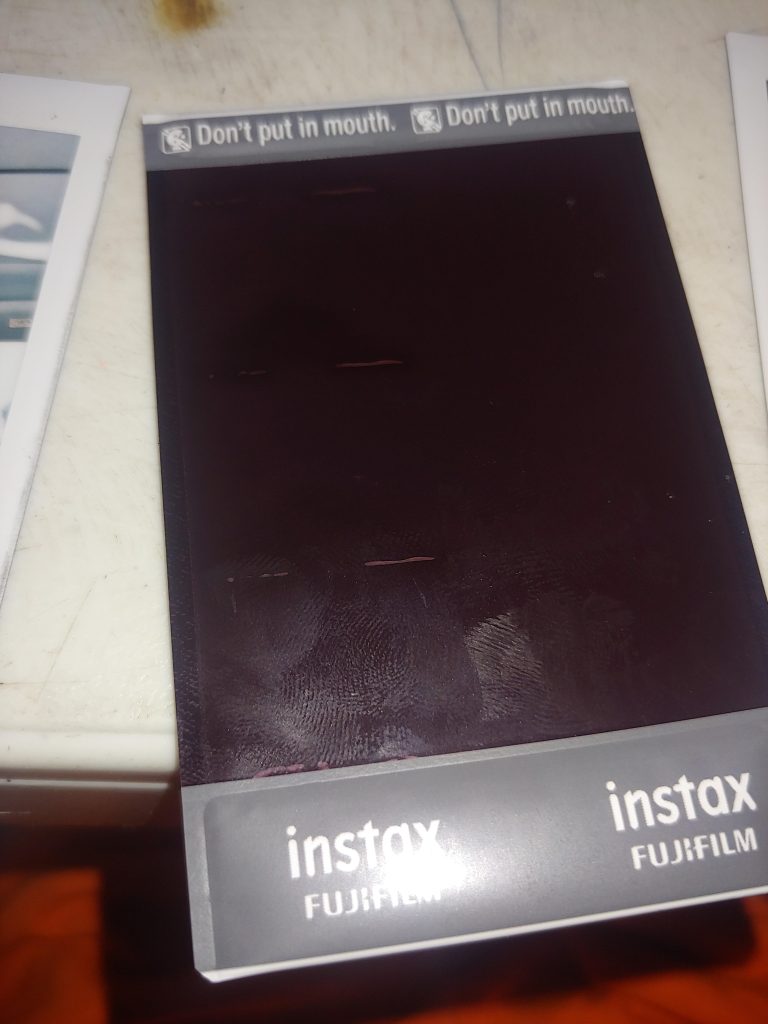Polaroids can come out white if the film cartridge is damaged or the camera’s exposure settings are incorrect. This issue may also occur if the film is expired or has been exposed to light.
Capturing moments with a Polaroid camera evokes a sense of nostalgia and instant gratification that is virtually unmatched. But the excitement of seeing your snapshot develop can quickly turn to disappointment when the photo ejects white. This common problem may confound photographers, from novices to enthusiasts.
The excitement of seeing your snapshot develop can quickly turn to disappointment when the photo ejects white. Understanding the intricacies of your camera, including the Instax Mini 12 flashing orange light, is essential for preserving those special moments. Proper storage of film, maintaining the camera, and using fresh cartridges are crucial steps to avert frustrating outcomes. Remember, capturing the perfect Polaroid means paying attention to both the camera’s mechanisms and the film’s quality before snapping that precious shot.
The Mystery Of Blank Polaroids
Imagine capturing a moment on a Polaroid camera, expecting a vibrant print,
and instead getting a blank white photo. This bewildering outcome frustrates many photography enthusiasts.
Uncovering the reasons behind white Polaroid photos is crucial
for anyone eager to preserve their memories in classic instant film style.
The Basic Polaroid Process
The Polaroid camera is an icon of instant photography, famous for its straightforward point-and-shoot approach.
Here’s a simplified look at how it works:
- Press the shutter button: light enters through the lens and hits the film.
- Chemical reaction: film layers react with light to form an image.
- Development: rollers push the film out, triggering a development process.
If any step fails, the result can be a disappointing blank slate.
Common Reasons For White Outcomes
Several factors can turn a Polaroid photo completely white. Below are some common culprits:
- Expired film: chemicals lose effectiveness over time.
- Improper storage: extreme temperatures affect film quality.
- Exposure issues: too much light during or after the shot can overexpose the film.
- Camera malfunctions: a defective camera might not process the film correctly.
Identifying these issues is the first step towards fixing them and getting the perfect shot.
Credit: photo.stackexchange.com
Film Issues Leading To Overexposure
Polaroid pictures can sometimes be mysterious. The anticipation of watching an image develop is part of the fun. But when Polaroids come out white? It’s often a sign of overexposure. This problem usually points to issues with the film used in your instant camera. Understanding these film issues can help prevent your precious moments from fading into a blank slate.
Expired Film Packs
Film doesn’t last forever. Expired film packs often lead to overexposed photos. The chemicals inside the film have a shelf life. After this date, their quality drops. Always check the expiration date on your film pack before use.
Film And Temperature Sensitivity
Polaroid film is sensitive to temperature. Too hot or too cold and your pictures could overexpose. Ideal temperatures for Polaroid film range between 55°F (13°C) and 82°F (28°C). Keep your camera and film within this range for the best results.
Storage Mishaps And Their Impacts
How you store your film can impact its performance. Incorrect storage leads to overexposed Polaroids. Follow these tips:
- Store film in a cool, dry place.
- Avoid direct sunlight and high temperatures.
- Use film soon after purchase for best quality.
Camera Complications And Usage Errors
Is your excitement turning to frustration when your Polaroids come out white? Often the issue lies in how the camera is being used or an internal glitch. Let’s unravel some of these mysteries and get your camera capturing memories correctly.
Faulty Camera Mechanisms
A Polaroid camera is a marvel of engineering, but sometimes things can go wrong internally. The culprit for white photos could be a broken ejection motor or a malfunctioning roller. These parts work together to process and develop the film. Here’s a quick checklist:
- Ensure the film pack is not expired.
- Check for any visible blockages or film jams.
- Listen for the motor sound when taking a picture.
If these checks fail, professional repair may be your next step.
Incorrect Camera Settings
Digital Polaroids give us control, but incorrect settings can result in overexposure. Adjusting exposure correctly is key. Ensure your camera settings are:
| Setting | Ideal Position |
|---|---|
| Exposure Compensation | Adjusted according to light |
| Film Type | Matched with camera |
Check the user manual to set these correctly.
Shutter And Lighting Mismanagement
Shutter speed and lighting are vital for the perfect shot. Polaroid cameras require adequate light. Too much or too little can lead to white photos.
Here’s how to manage it:
- Aim for natural light or use a flash in dark environments.
- Avoid direct sunlight, which may overwhelm the film.
- Hold the camera steady to prevent blurring, affecting exposure.
Mastering these basics ensures better Polaroid outcomes.
Troubleshooting And Preventive Measures
Seeing a blank white image eject from your Polaroid camera can be frustrating, but don’t worry! Understanding why this happens and how to fix it will have you snapping picture-perfect Polaroids in no time. Let’s dive into some simple troubleshooting and preventive measures to help ensure your memories are captured just the way you want them.
Checking And Cleaning Camera Components
Regular maintenance keeps your camera in top shape. Start with these steps:
- Check for obstructions in the film ejection path.
- Wipe the lenses with a soft, dry cloth.
- Inspect the film rollers for dirt or stickiness.
- Ensure the camera’s battery is fully charged. Weak batteries cause issues.
Proper Film Handling Techniques
How you handle the film matters. To avoid white outcomes:
- Store film in cool, dry places away from direct sunlight.
- Load film into the camera in dim lighting to prevent exposure.
- Handle film by its edges to keep the surface clean.
- Use film before its expiration date for best results.
Tips For Ideal Photography Conditions
Creating the perfect environment for Polaroids isn’t hard. Follow these tips:
| Condition | Tip |
|---|---|
| Lighting | Avoid direct sunlight; diffuse light is best. |
| Temperature | Shoot in mild temperatures; extreme cold or heat affects film. |
| Subject Distance | Follow your camera’s recommended focus distance. |
Beyond The Camera: External Factors

Is your Polaroid’s smile turning into a frown with white photographs? Perfect moments deserve perfect pictures, but sometimes the unseen factors play spoilsport. Understanding the role of external elements can be the key to unlocking the vibrant colors of your memories. Let’s dive into the world around your camera that can influence the outcome of your Polaroids.
The Impact Of Ambient Light
Ambient light is a game-changer for your Polaroid snapshots. Here’s what you need to know:
- Low light can lead to underexposed and pale images.
- Bright light sources can cause overexposure, washing out your photos.
- Evenly distributed light is essential for the best pictures.
Time your shots when the light is just right to avoid those white Polaroids.
The Role Of Reflection And Brightness
Reflective surfaces and brightness can make or break a photo. Remember these pointers:
- Shiny objects or surfaces can lead to unexpected reflections.
- Direct sunlight might seem ideal, but it can lead to overwhelming brightness.
- Soft shadows add depth, enhancing your photo’s quality.
Position yourself and your subject to balance light and shadows for that perfect shot.
When To Seek Professional Help
If you’ve tried it all and still see white photos, it might be time to call for help. Consider these signs:
- Repeated white outcomes despite changing settings suggest internal issues.
- A persistent problem might be a defect with the film or camera.
- Professionals can diagnose and fix hidden technical glitches.
Don’t hesitate to seek a professional’s insight when your at-home troubleshooting hits a wall.
Credit: support.polaroid.com
Frequently Asked Questions For Why Are My Polaroids Coming Out White
Why Do My Polaroids Turn Out Completely White?
When Polaroids turn out white, it’s often due to overexposure. The camera’s shutter might have been open too long, letting in too much light. This can happen in bright environments or if the light setting is incorrect. Always check the light settings before snapping a picture.
How Can I Prevent White Polaroid Photos?
To prevent white photos, make sure you’re using your Polaroid camera in the proper lighting conditions. Adjust the exposure settings if your model allows it. Shield the photo from light immediately after it ejects, and avoid opening the film door while there’s unused film inside.
What Causes Undeveloped Patches In Polaroid Pictures?
Undeveloped patches usually occur due to uneven spreading of the developer chemicals. This might be because of a malfunctioning roller or using expired film. Ensure that your camera’s rollers are clean and the film is within its use-by date for the best results.
Can A Faulty Polaroid Camera Produce White Photos?
Yes, a faulty camera can cause photos to come out white. Problems might include defective rollers, a spoiled film pack, or issues with the camera’s electronic components. If you’ve ruled out user error and are using fresh film, consider getting your camera serviced.
In Conclusion:
Experiencing issues with blank Polaroid photos can be frustrating. This post aimed to shed light on common causes such as film exposure, camera malfunctions, and user error. With the pointers shared, you’re now equipped to troubleshoot effectively. Remember, perfecting the art of Polaroid photography takes practice, so keep experimenting and enjoy the process.


